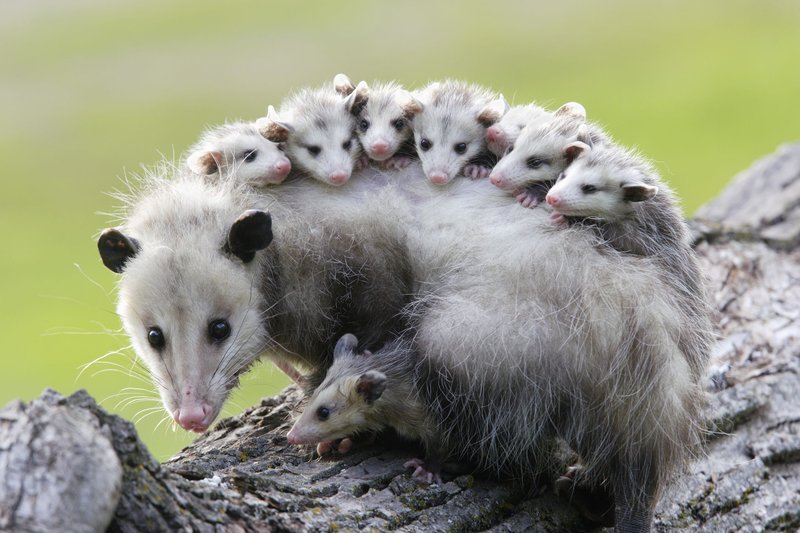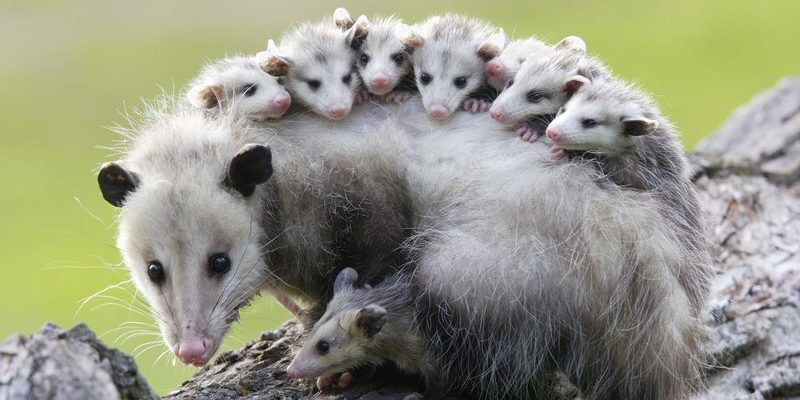
Possums are often misunderstood. They’re not the cuddly pets many think they are; in fact, they play a crucial role in their ecosystems. Their ability to adapt means they can live in a variety of environments, from urban areas to dense forests. In this article, we’ll explore the remarkable strategies these creatures use to survive. Let’s dive into their fascinating world and see how they navigate challenges that would stump even the hardiest animals.
Adaptability: The Key to Survival
Possums are masters of adaptability. They can thrive in diverse habitats, whether it’s a suburban backyard or a remote forest. One of the unique ways they adapt is through their diet. Possums are omnivores, meaning they eat a wide variety of foods. This includes fruits, insects, small animals, and even garbage when necessary. Talk about being resourceful!
Their ability to eat almost anything helps them survive in areas where food might be scarce. For example, in urban settings, they often forage through trash cans. In natural forests, they feast on insects and fruits that grow in abundance. This dietary flexibility allows them to fill different ecological niches, making them less vulnerable to food shortages.
You might be wondering how they manage to find food in harsh conditions. Possums have a keen sense of smell and excellent nocturnal vision. They tend to be most active at night, which helps them avoid predators. By being adaptable, they can exploit whatever resources are available, no matter the location or situation.
Unique Physiological Traits
Possums have some incredible physiological traits that help them endure tough environments. For starters, they have a thick fur coat that provides insulation. This is especially beneficial during colder months, allowing them to maintain their body heat. You could say their fur acts like a natural winter coat.
Another fascinating feature is their prehensile tail. Unlike other marsupials, possums can use their tails for balance and grip while climbing trees. This helps them escape predators and reach food sources high above ground. Their climbing skills give them a unique advantage in their habitats, allowing them to navigate trees and shrubs with ease.
Possums also have a remarkable immune system. They are resistant to rabies and other diseases that often affect smaller mammals. This resilience is critical when living among urban wildlife, where disease can spread quickly. Their physiological adaptations not only enhance their survival but also help them thrive in a variety of environments.
Behavioral Strategies for Survival
When it comes to survival, behavioral strategies play a crucial role for possums. One classic defense mechanism is “playing dead.” When faced with danger, possums can feign death, sometimes for hours. This tactic can confuse predators, allowing them to escape unharmed. It’s almost like they’re putting on an act to distract their would-be attackers.
In addition to this dramatic tactic, possums are expert foragers. They often scavenge at night, using their keen senses to locate food. By being primarily nocturnal, they avoid many predators that hunt during the day. Nighttime escapades give them a better chance of finding food and avoiding encounters with larger animals that might see them as a meal.
Possums also possess strong social skills. They often live alone but will share territory with others during plentiful times. This communal living allows them to benefit from each other’s foraging successes while reducing the risk of over-exploiting a food source. By being both solitary and social, possums cleverly navigate their environments to survive.
Reproductive Strategies
The reproductive habits of possums contribute significantly to their survival in harsh conditions. Possums have a short gestation period—just about 12 days! After this, the tiny, undeveloped babies climb into their mother’s pouch to continue growing. This rapid reproduction allows possums to bounce back quickly, even after facing environmental challenges or population pressures.
A female possum can give birth to eight or more babies in a litter. They usually raise the young in safety, away from predators and harsh weather. Each baby stays in the pouch for about two to three months, providing a secure environment for their growth. After leaving the pouch, they cling onto their mother’s back for several weeks, learning to navigate their surroundings.
This quick reproductive cycle means that even if harsh conditions wipe out many adults, the species can recover rapidly. Their ability to produce many offspring gives them a fighting chance in the wild, ensuring the survival of the next generation.
Environmental Challenges and Adaptations
Possums face numerous environmental challenges, from harsh weather to habitat destruction. Yet, they have developed an impressive set of strategies to handle these adversities. One such challenge is extreme weather, which can impact food availability and living conditions.
When faced with cold winters or droughts, possums can enter a state of torpor. This is like a deep sleep where their metabolic rate slows down, allowing them to conserve energy. During this period, they can survive on stored body fat, reducing their need for food until conditions improve. This ability to slow down is a significant advantage during tough times.
Additionally, habitat loss due to urban expansion and deforestation poses a significant threat to possums. However, their adaptable nature allows them to find new homes. They can thrive in urban areas, utilizing parks and gardens as makeshift habitats. This flexibility helps them cope with environmental changes and maintain their populations in various settings.
The Role of Possums in Their Ecosystem
Possums may seem like solitary survivors, but they play an essential role in their ecosystems. They act as natural pest controllers by eating insects, ticks, and other small pests. This helps keep insect populations in check, contributing to a healthier environment.
Additionally, by foraging for fruits and seeds, possums help with seed dispersal. When they consume fruit and then travel, they help propagate new plants by spreading seeds. This contributes to forest regeneration and biodiversity, showing how intertwined their survival is with the health of their environment.
Moreover, possums serve as prey for larger predators, maintaining the balance within their ecosystems. They provide nourishment for animals like owls and foxes, ensuring a food web that supports multiple species. Their unique survival tactics create a ripple effect that sustains the various communities they inhabit.
In a world full of uncertainties, possums showcase remarkable resilience and adaptability. From their diverse diets to unique behaviors, they teach us that survival isn’t just about strength—it’s also about being clever and resourceful. The next time you see a possum wandering through your backyard or a nearby park, take a moment to appreciate its ability to thrive in challenging environments.
Whether they’re climbing trees, playing dead, or sharing their territory with friends, possums are much more than meets the eye. Their survival strategies remind us of nature’s incredible capacity to adapt and endure. So, here’s to the little masked bandits of the wild—may they continue to inspire us with their resourcefulness and charm!

